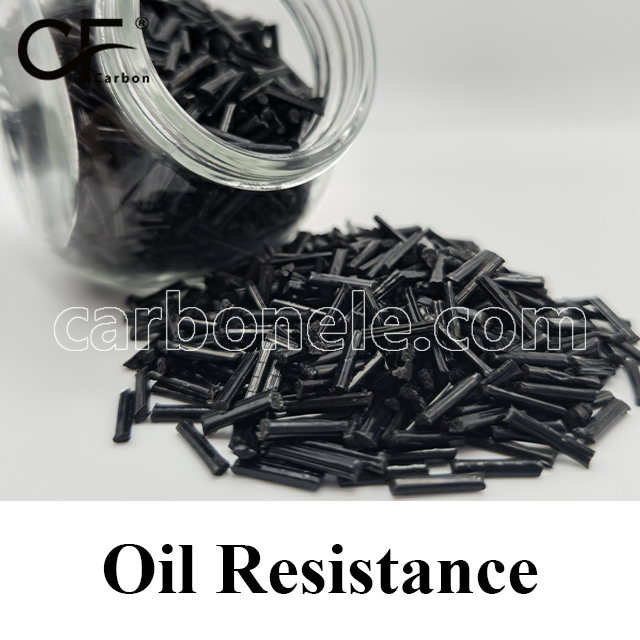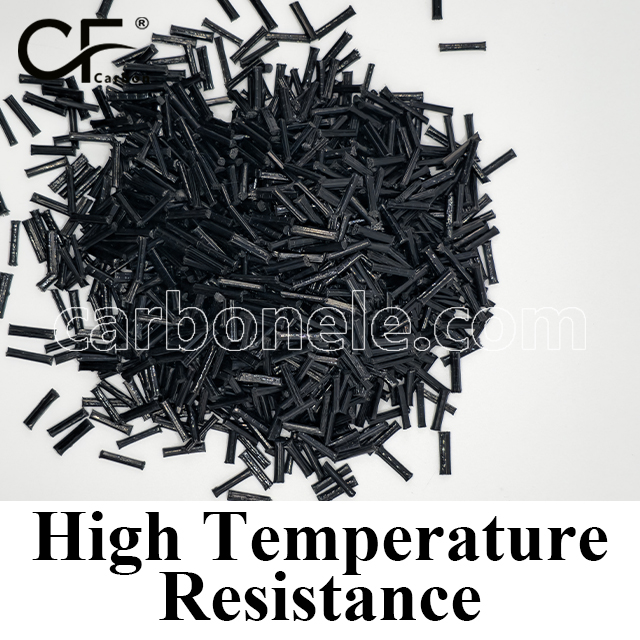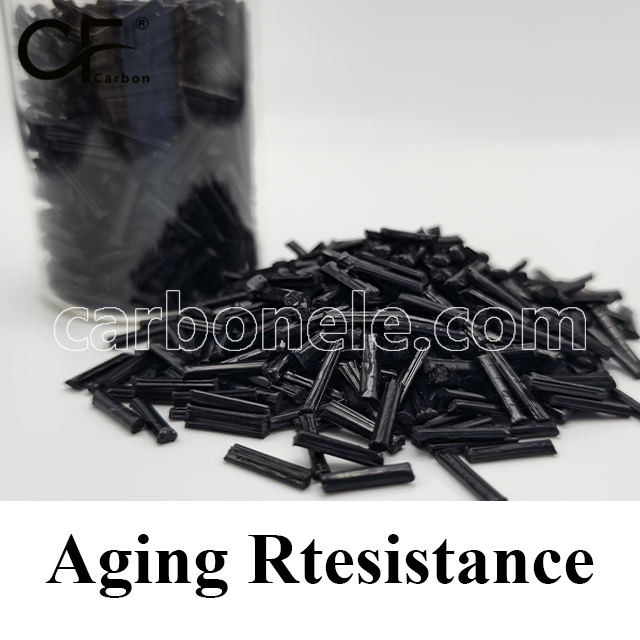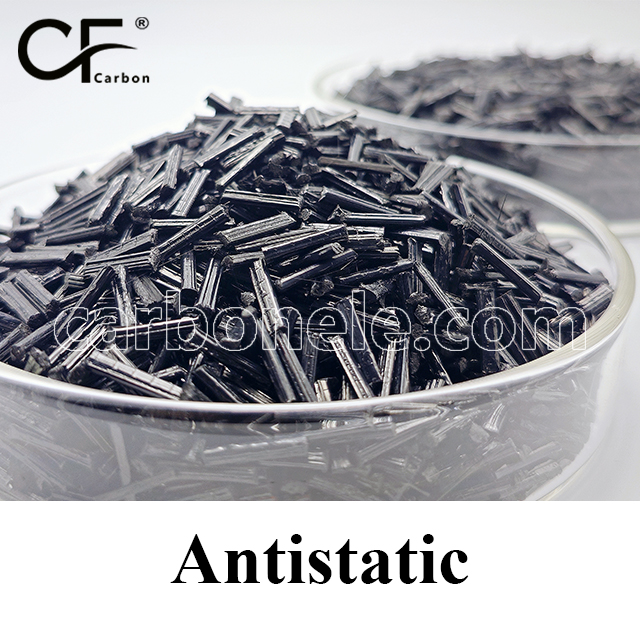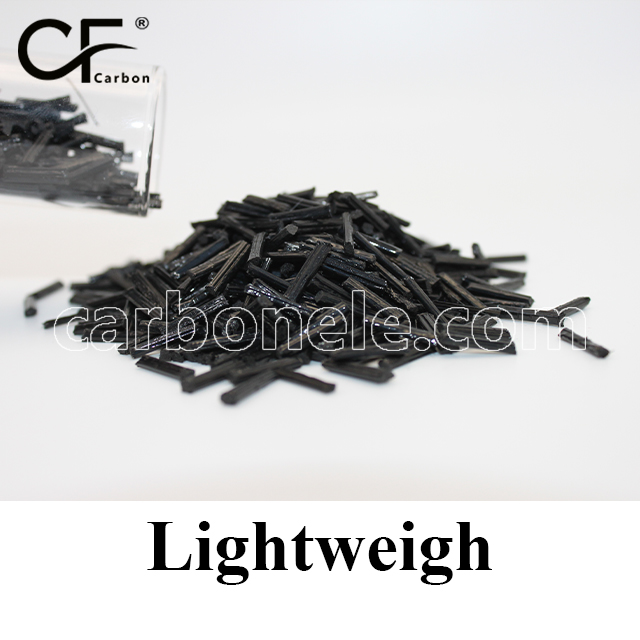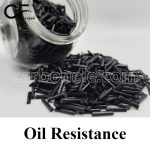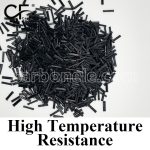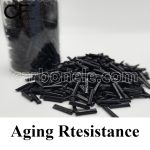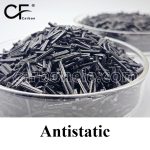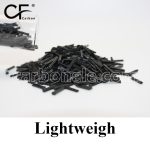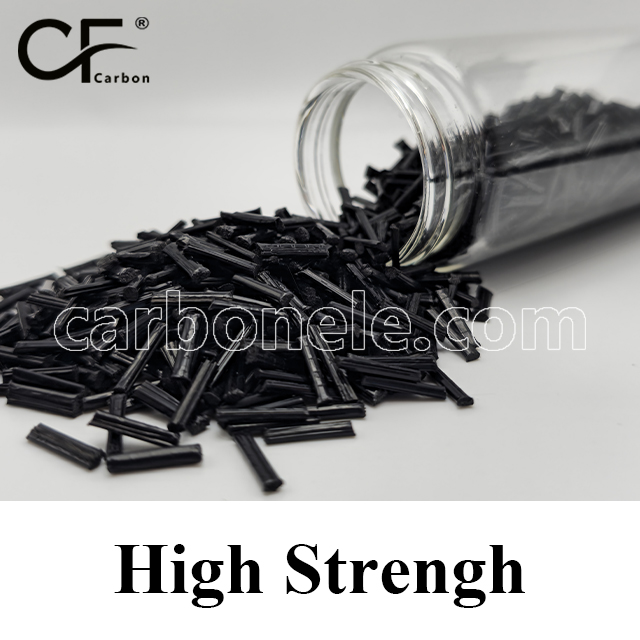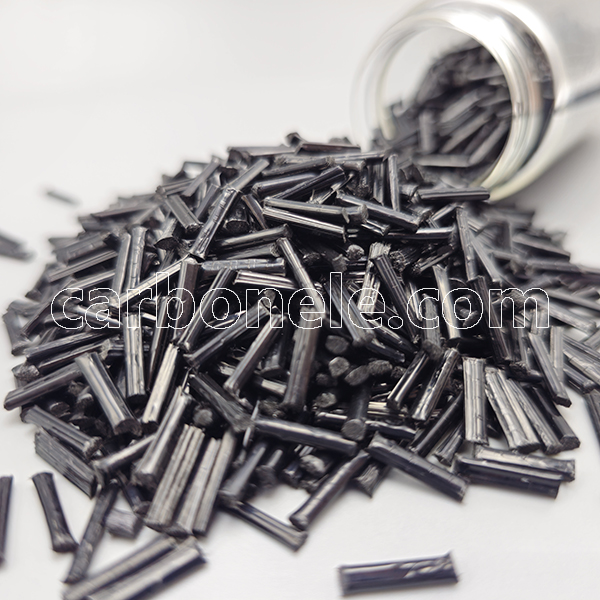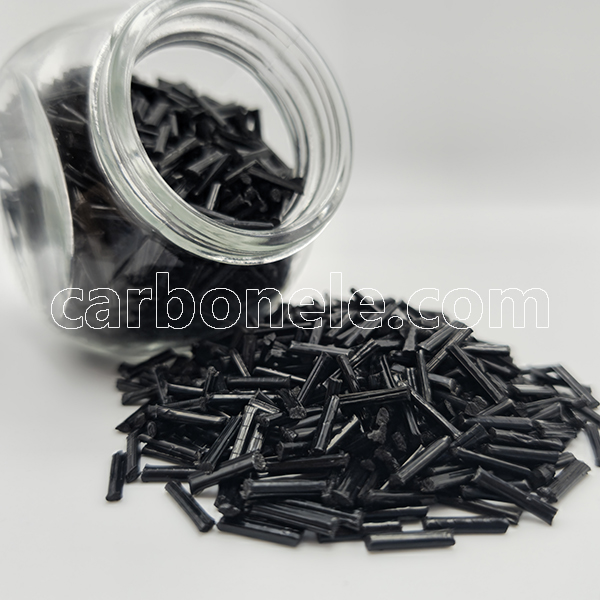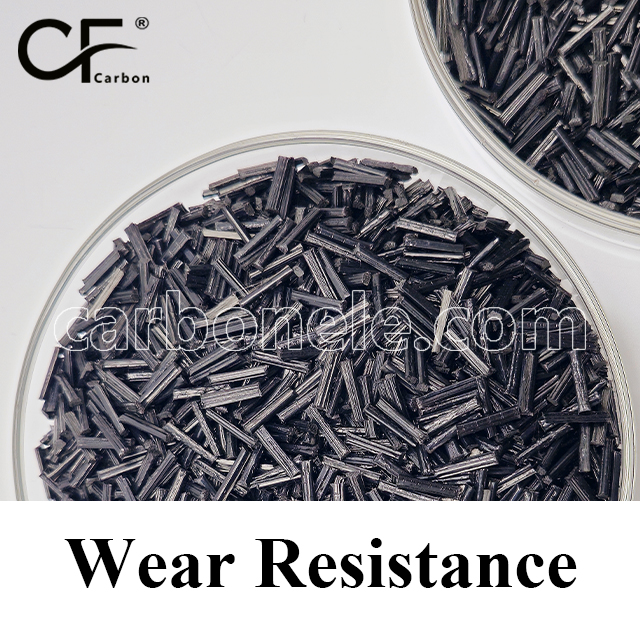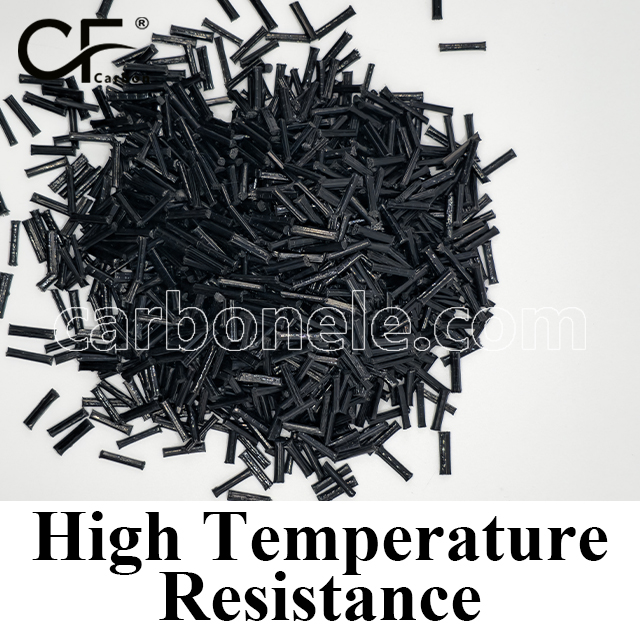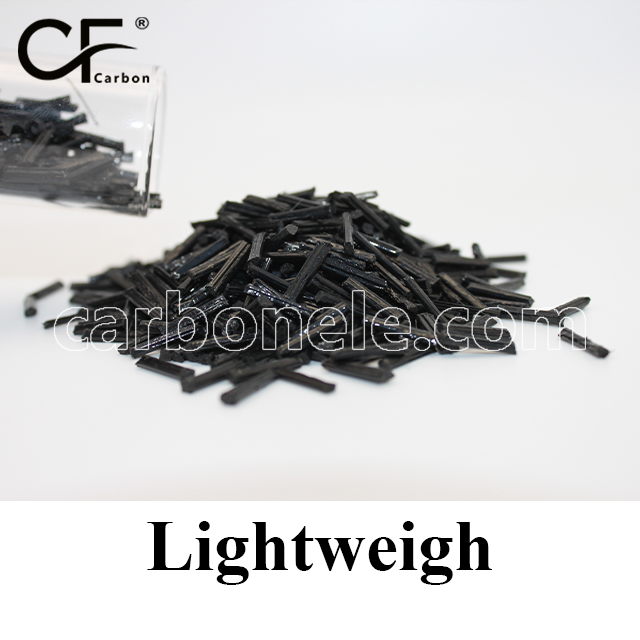
High Stiffness and Low Friction TPU-LCF40
TPU-LCF40 is a high strength thermoplastic polyurethane reinforced with 40% long carbon fiber. It combines exceptional stiffness, tensile strength (≥ 80 MPa), and dimensional stability with retained flexibility and impact resistance, making it ideal for semi-structural components in automotive, robotics, and industrial applications exposed to vibration, heat (up to 110 °C), and chemical stress.
- Model number: TPU-LCF-BCA3
- Matrix Resin: Thermoplastic polyurethane (TPU)
- Reinforcing Filler: Carbon fiber
- Appearance: Granules
- Grade: Injection/extrusion grade
- Packaging: 25kgs/bag
TPU-LCF40 | 40% Long Carbon Fiber Reinforced Thermoplastic Polyurethane
TPU-LCF40 is a structurally enhanced thermoplastic elastomer featuring 40% long carbon fiber reinforcement, delivering a powerful combination of mechanical rigidity and engineered flexibility. With this elevated fiber loading, TPU-LCF40 offers exceptional tensile strength, stiffness, and dimensional control—while still retaining key elastomeric traits such as shock absorption and fatigue resistance.
Compared to TPU-LCF30, this formulation provides superior load bearing capacity, improved thermal resistance, and increased durability under repeated mechanical cycling. The long carbon fibers are aligned to support directional strength, enabling TPU-LCF40 to serve as a lightweight alternative to aluminum or reinforced nylons in semi structural applications.
Designed for high performance environments with exposure to vibration, flex, and chemical attack, TPU-LCF40 excels in hybrid structural parts used across automotive, robotic, and industrial systems where stiffness and resilience must coexist.
Core Performance Highlights
Mechanical Properties
Carbon Fiber Content: 40% (Long Carbon Fiber, aligned for maximum structural efficiency)
Tensile Strength: ≥ 80 MPa
Elongation at Break: ≥ 50%
Shore Hardness: ~98A
→ Enhanced stiffness with retained elastomeric rebound for vibration damping and high cycle loading.
Thermal Resistance
Heat Deflection Temperature (HDT): ~120 °C
Continuous Use Temperature: Up to 110 °C
→ Operates reliably in thermally active zones such as near engines, motors, or actuators.
Environmental & Chemical Durability
Moisture Absorption: Low — resists dimensional drift in wet or humid conditions
Chemical Resistance: Excellent — handles oils, fuels, industrial fluids, and solvents
→ Suitable for chemically harsh, outdoor, or high load environments.
Processing & Manufacturing
Molding Methods: Injection molding, extrusion, LCF compatible 3D printing
Surface Finish: Matte with pronounced carbon fiber texture due to high loading
Tooling Considerations: High strength steel tooling required; optimized runner and gate design critical for fiber integrity
→ Enables repeatable, high performance part production with proper equipment setup.
Target Applications
Automotive & Mobility
Reinforced brackets, semi structural mounts, engine bay dampers
→ Combines rigidity with impact tolerance in heat and chemical exposed areas.
Industrial Equipment
Load isolators, dynamic wear plates, structural vibration control components
→ Maintains strength and shape in repeated motion and fluid contact settings.
Robotics & Automation
High load joints, flex rigid actuators, structural end effector frames
→ Ideal for lightweight mechanical elements with demanding fatigue requirements.
Protective Systems & Wearables
Impact diffusing panels, durable exoskeletal supports, ruggedized inserts
→ Tough enough for field use in safety equipment, tools, or wearable tech.
Performance Summary Table
| Property | Value / Description |
|---|---|
| Carbon Fiber Content | 40% (Long Carbon Fiber) |
| Tensile Strength | ≥ 80 MPa |
| Elongation at Break | ≥ 50% |
| Shore Hardness | ~98A |
| Heat Deflection Temp. | ~120 °C |
| Long Term Service Temp. | Up to 110 °C |
| Water Absorption | Low — maintains integrity under humid or submerged conditions |
| Chemical Resistance | Excellent — resists oils, fuels, solvents, and greases |
| Wear Resistance | Extremely high — for moving parts under friction and repetitive load |
| Processing Methods | Injection molding, extrusion, long carbon fiber 3D printing |
| Surface Finish | Matte with visible fiber texture |
| Dimensional Stability | Exceptional — supports structural use with controlled flex |
Friction coefficient of PA12-LCF
The friction coefficient of TPU is typically between 0.3 and 0.5, while TPU-CF, with added carbon fiber, lowers the friction coefficient to between 0.2 and 0.4. The smaller the value, the better the wear resistance. Therefore, TPU-CF generally offers better wear resistance than pure TPU, especially under high-load conditions.
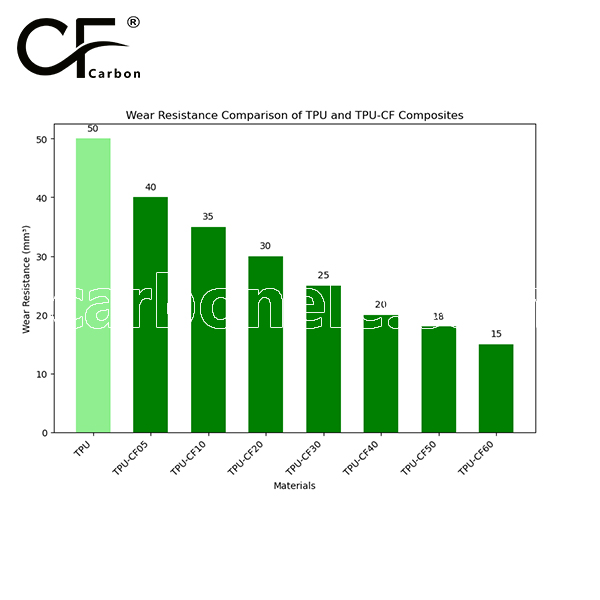
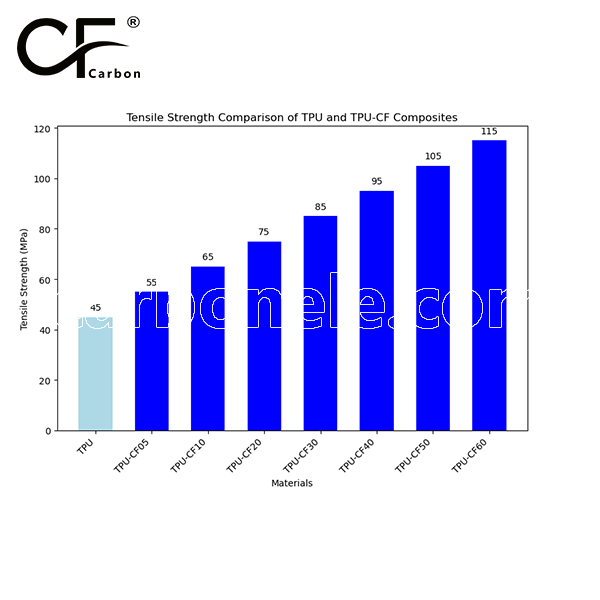

Frequently Asked Questions
Carbon (Xiamen) New Material Co., Ltd. aims to provide buyers with "one-stop" worry-free high-quality services. Here you can find all information about carbon fiber engineering plastics. If you still have questions, please send us an email for consultation!
-
How can I contact the manufacturer of a product that interests me?
When you find a product you are interested in, you can contact the manufacturer directly by sending an email and we will get back to you as soon as possible.
-
How do I find the products that interest me?
All you need to do is enter the keyword, product name in the search window and press the Enter key on your keyboard. Your search results page will then be displayed. You can also search within the product category pages on the home page. Each category is divided into subcategories, allowing you to refine your search and find products that interest you.
-
Where will I find a buying guide?
Please contact our after-sales service directly and we will provide you with a comprehensive operating guide.
-
What are CF Reinforced Thermoplastic Composites?
CF Reinforced Thermoplastic Composites are materials where carbon fibers are incorporated into a thermoplastic matrix. They combine the strength and stiffness of carbon fibers with the processability and recyclability of thermoplastics. For instance, they are used in automotive parts like bumper beams.
-
What are the benefits of CF Reinforced Thermoplastic Composites over traditional composites?
The key benefits include faster production cycles, easier recyclability, and better impact resistance. They also offer design flexibility. An example is in the manufacturing of consumer electronics casings where complex shapes can be achieved more easily.
-
How are CF Reinforced Thermoplastic Composites processed?
Common processing methods include injection molding, extrusion, and compression molding. Injection molding is widely used for mass production. For example, in the production of small components for the medical industry.
-
What industries use CF Reinforced Thermoplastic Composites?
They are utilized in aerospace, automotive, medical, and sports equipment industries. In aerospace, they can be found in interior components. In the medical field, they might be used in prosthetics.
-
How does the carbon fiber content affect the properties of the composites?
Higher carbon fiber content generally leads to increased strength and stiffness but may reduce ductility. A moderate content is often balanced for specific applications. For example, a higher content might be preferred in structural parts of a race car.
-
What are the challenges in using CF Reinforced Thermoplastic Composites?
Challenges include higher material costs, complex processing equipment requirements, and ensuring uniform fiber dispersion. Issues with adhesion between the fibers and the matrix can also arise. An example is in achieving consistent quality in large-scale production.







